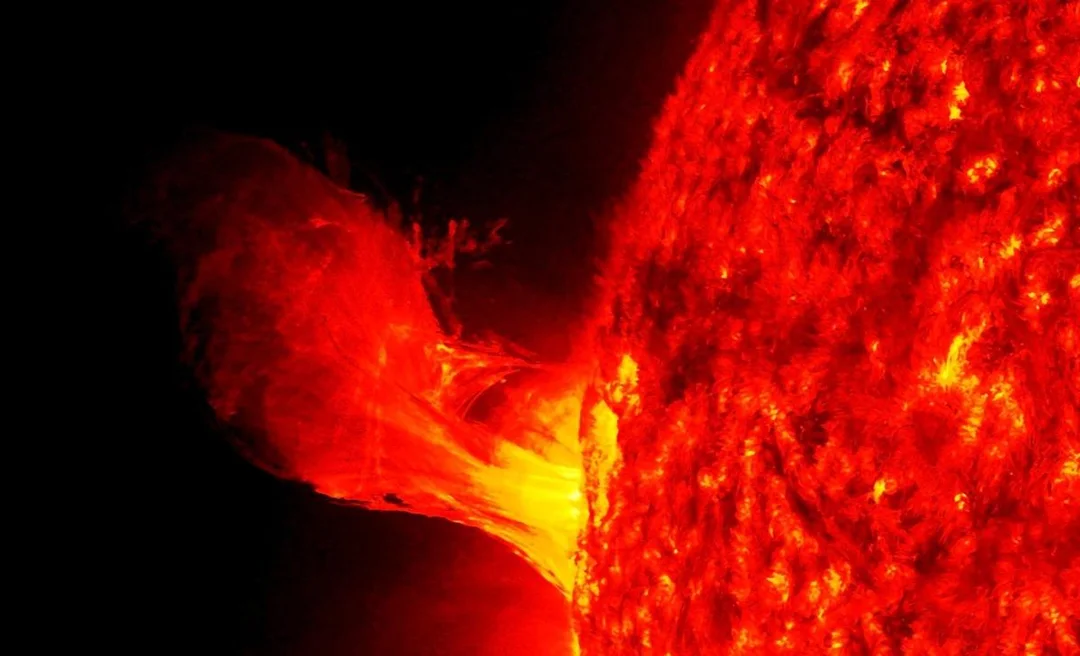
Scientists Discover Earth Was Hit by a Mega Solar Storm 14,300 Years Ago, Dwarfing Modern Events
Brace yourselves! New research has uncovered evidence of a colossal solar storm that struck Earth a staggering 14,300 years ago, making recent auroral displays look like mere twinkles. This extreme event, the strongest ever detected, is revolutionizing our understanding of space weather and its potential impact on modern infrastructure. But just how big was this ancient solar storm, and what does it mean for our future?

An international team of scientists, led by researchers from the University of Oulu, Finland, have identified an extreme spike in radiocarbon dating back to 12350 BC, right at the tail end of the last Ice Age. Using their innovative chemistry-climate model, SOCOL:14C-Ex, they discovered that this event was a whopping 18% stronger than the previously known record-holder (the AD 775 event) and a staggering 500 times more intense than the largest solar particle storm of the modern satellite era (2005).
"Compared to the largest event of the modern satellite era – the 2005 particle storm – the ancient 12350 BC event was over 500 times more intense, according to our estimates," said Dr. Kseniia Golubenko, lead author and postdoctoral researcher at the University of Oulu.
Other notable solar particle storms include those around 994 AD, 663 BC, 5259 BC, and 7176 BC. However, this Ice Age event stands alone in its sheer magnitude. This discovery, detailed in a paper published in *Earth and Planetary Science Letters*, highlights the urgent need to re-evaluate worst-case scenarios for future solar events.
This ancient space weather cataclysm wasn't just any solar storm; it was a solar particle storm, a burst of high-energy protons that bombarded Earth. Unlike the famous Carrington event of 1859 (which was a different type of solar flare), this Ice Age storm was accompanied by a massive particle shower.
These types of events, marked by sharp rises in radiocarbon (14C) concentrations, are known as Miyake events, named after the Japanese researcher who first discovered them. These occurrences allow scientists to pinpoint exact calendar years in archaeological timelines, helping to accurately date everything from Viking settlements in Newfoundland to Neolithic communities in Greece. The recent finding extends our ability to analyze radiocarbon data even for glacial climate conditions.
So, what's the big deal? Why does an event that happened millennia ago matter today? Understanding the scale of this ancient storm is critical for evaluating the risks future solar storms pose to modern infrastructure. A repeat of the 12350 BC event could cripple satellite constellations, disrupt navigation systems, overload power grids, and wreak havoc on communication networks. While the 1989 Quebec blackout and the Carrington flare offer some perspective, they pale in comparison to the sheer power of this Ice Age solar storm.
"This event establishes a new worst-case scenario," Golubenko emphasized. "Understanding its scale is critical for evaluating the risks posed by future solar storms to modern infrastructure like satellites, power grids, and communication systems."
The SOCOL:14C-Ex model has now been validated under both Holocene and glacial conditions, marking a significant step forward in analyzing radiocarbon variations across different climatic and geomagnetic epochs. Scientists can now track the Sun’s wildest moods across multiple ice ages, offering a clearer view of our star’s potential and a sterner test for the resilience of modern technology. And with the model applicable to glacial settings, the researchers plan to scan older growth rings and polar ice for further anomalies.
This remarkable discovery serves as a stark reminder of the immense power of our Sun and the potential threats it poses. What steps can we take to mitigate the risks associated with future extreme solar events? Share your thoughts and perspectives in the comments below!